Abstract
The use of diphenylcarbazide as an electron donor coupled to the photoreduction of 2,6-dichlorophenolindophenol by tris-washed chloroplasts or subchloroplast fragments provides a simple and sensitive assay for photosystem 2 of chloroplasts. By varying the concentration of tris buffer at pH 8.0 during an incubation period it is shown that the destruction of oxygen evolution activity is accompanied by a corresponding emergence of an ability to photooxidize diphenylcarbazide, as evidenced by absorbance changes due to diphenylcarbazide at 300 nm. The temperature-sensitive oxidation of diphenylcarbazide is inhibited by DCMU and by high ionic strengths. This activity appears to measure the primary photochemical reaction of photosystem 2.
Full text
PDF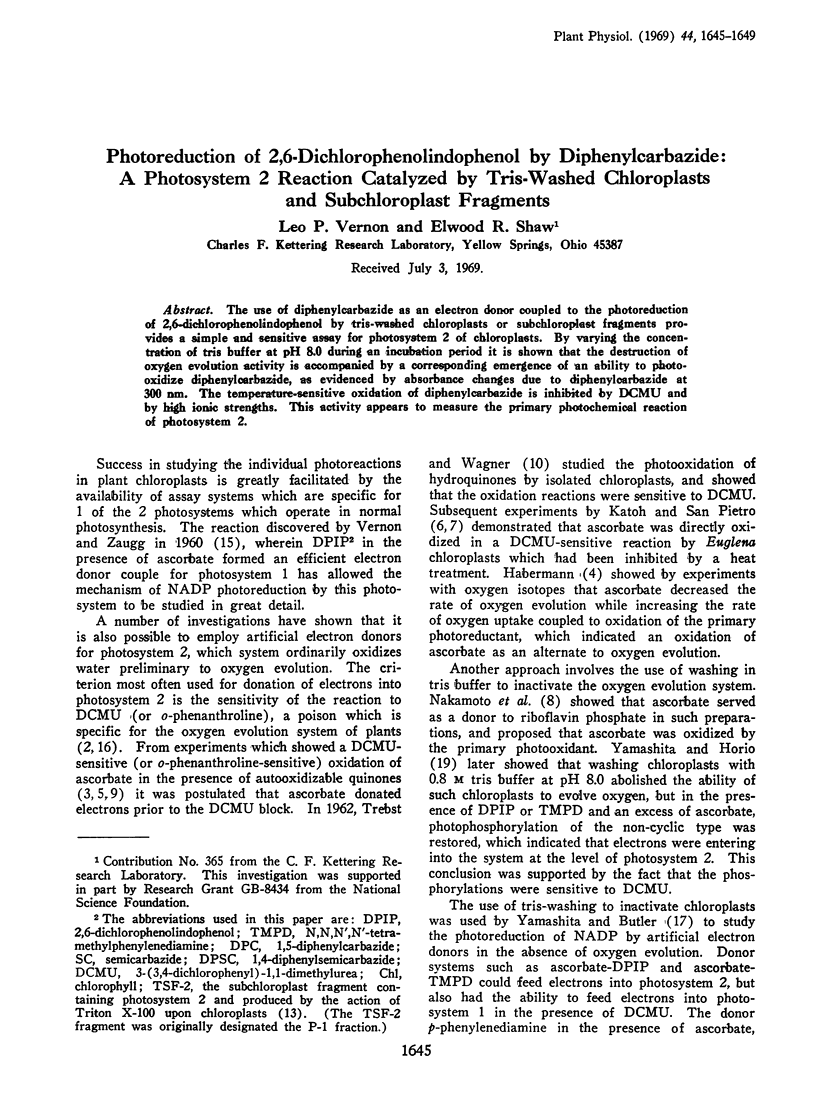
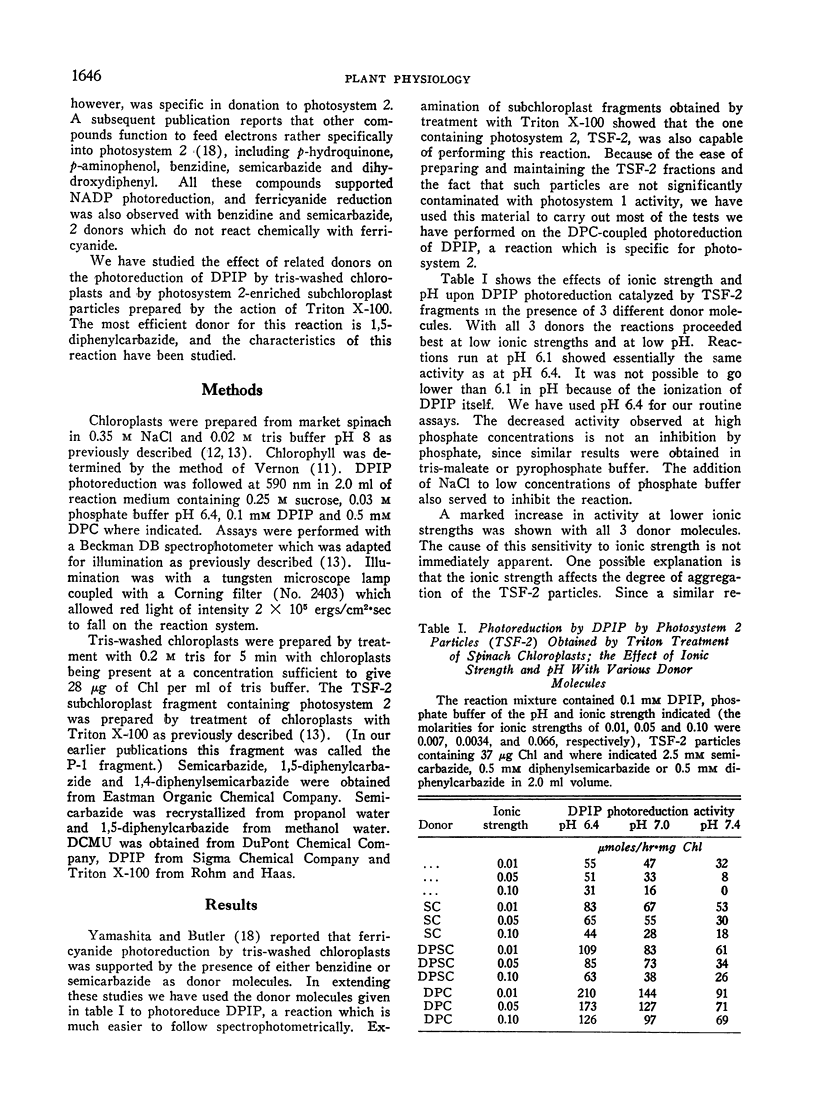
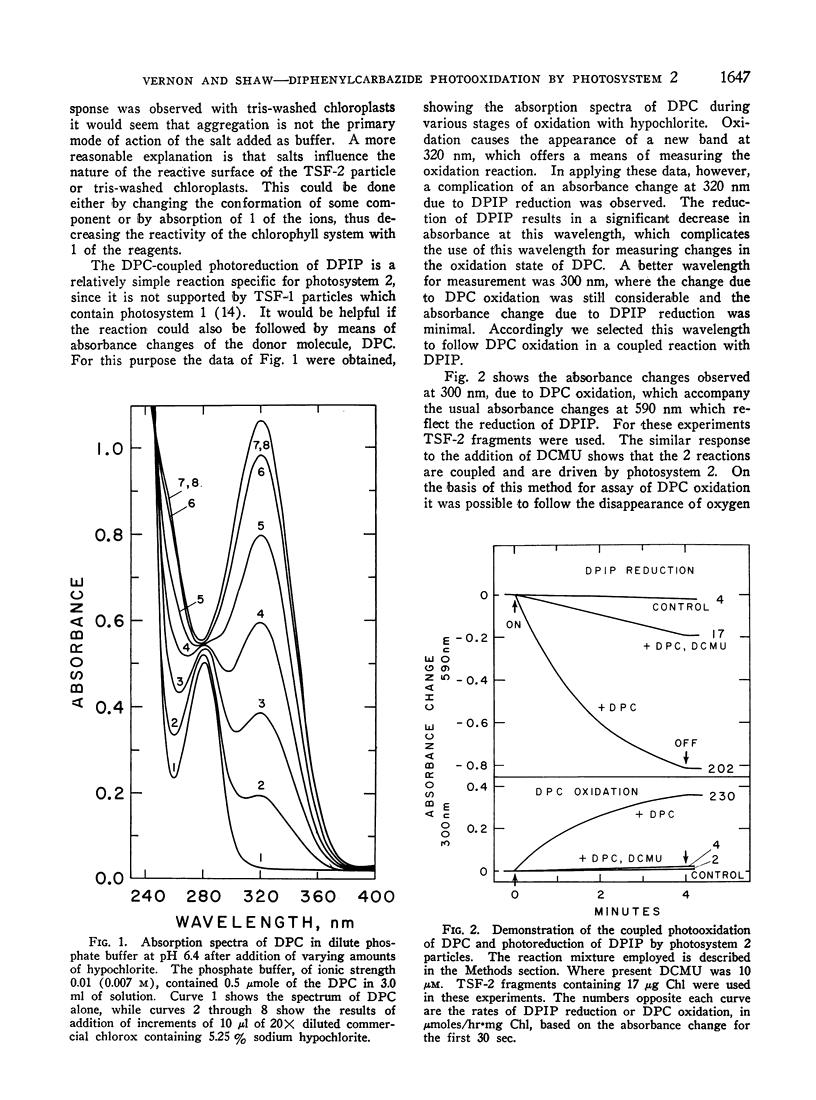
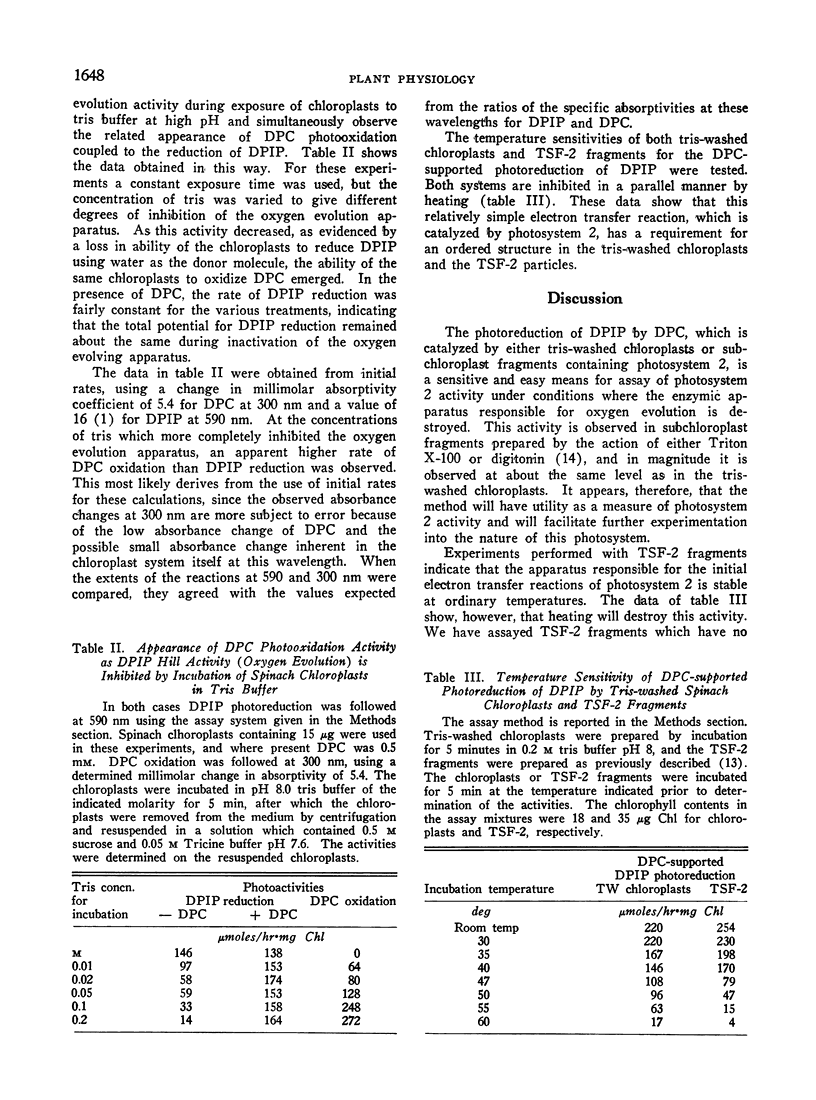
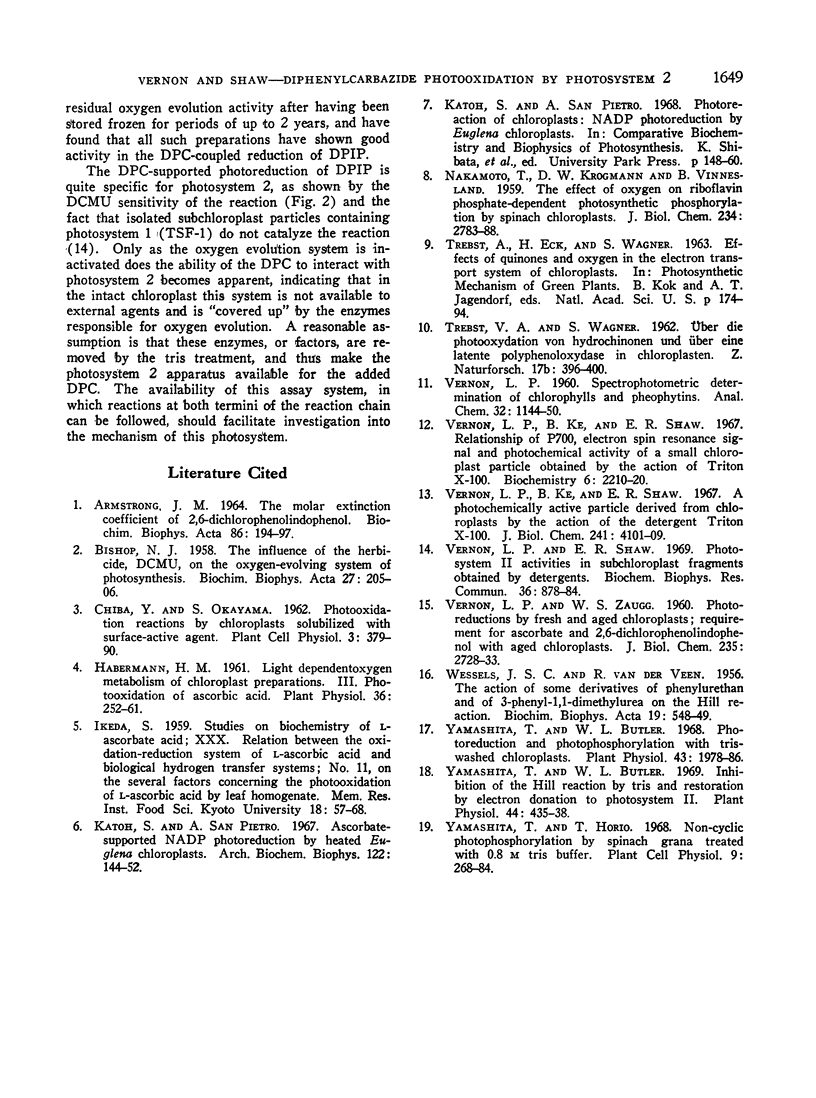
Selected References
These references are in PubMed. This may not be the complete list of references from this article.
- ARMSTRONG J. M. THE MOLAR EXTINCTION COEFFICIENT OF 2,6-DICHLOROPHENOL INDOPHENOL. Biochim Biophys Acta. 1964 Apr 4;86:194–197. doi: 10.1016/0304-4165(64)90180-1. [DOI] [PubMed] [Google Scholar]
- BISHOP N. I. The influence of the herbicide, DCMU, on the oxygen-evolving system of photosynthesis. Biochim Biophys Acta. 1958 Jan;27(1):205–206. doi: 10.1016/0006-3002(58)90313-5. [DOI] [PubMed] [Google Scholar]
- Habermann H. M. Light dependent oxygen metabolism of chloroplast preparations. III. Photooxidation of ascorbic acid. Plant Physiol. 1961 Mar;36(2):252–261. doi: 10.1104/pp.36.2.252. [DOI] [PMC free article] [PubMed] [Google Scholar]
- Katoh S., San Pietro A. Ascorbate-supported NADP photoreduction by heated Euglena chloroplasts. Arch Biochem Biophys. 1967 Oct;122(1):144–152. doi: 10.1016/0003-9861(67)90133-6. [DOI] [PubMed] [Google Scholar]
- NAKAMOTO T., KROGMANN D. W., VENNESLAND B. The effect of oxygen on riboflavin phosphate-dependent photosynthetic phosphorylation by spinach chloroplasts. J Biol Chem. 1959 Oct;234:2783–2788. [PubMed] [Google Scholar]
- VERNON L. P., ZAUGG W. S. Photoreductions by fresh and aged chloropasts: requirement for ascorbate and 2, 6-dichlorophenolindophenol with aged chloroplasts. J Biol Chem. 1960 Sep;235:2728–2733. [PubMed] [Google Scholar]
- Vernon L. P., Ke B., Shaw E. R. Relationship of P700, electron spin resonance signal, and photochemical activity of a small chloroplast particle obtained by the action of Triton X-100. Biochemistry. 1967 Jul;6(7):2210–2220. doi: 10.1021/bi00859a044. [DOI] [PubMed] [Google Scholar]
- Vernon L. P., Shaw E. R., Ke B. A photochemically active particle derived from chloroplasts by the action of the detergent Triton X-100. J Biol Chem. 1966 Sep 10;241(17):4101–4109. [PubMed] [Google Scholar]
- Vernon L. P., Shaw E. R. Oxidation of 1,5-diphenylcarbazide as a measure of photosystem 2 activity in subchloroplast fragments. Biochem Biophys Res Commun. 1969 Sep 10;36(6):878–884. doi: 10.1016/0006-291x(69)90285-x. [DOI] [PubMed] [Google Scholar]
- WESSELS J. S., VAN DER VEEN R. The action of some derivatives of phenylurethan and of 3-phenyl-1, 1-dimethylurea on the Hill reaction. Biochim Biophys Acta. 1956 Mar;19(3):548–549. doi: 10.1016/0006-3002(56)90481-4. [DOI] [PubMed] [Google Scholar]
- Yamashita T., Butler W. L. Inhibition of the Hill Reaction by Tris and Restoration by Electron Donation to Photosystem II. Plant Physiol. 1969 Mar;44(3):435–438. doi: 10.1104/pp.44.3.435. [DOI] [PMC free article] [PubMed] [Google Scholar]
- Yamashita T., Butler W. L. Photoreduction and photophosphorylation with tris-washed chloroplasts. Plant Physiol. 1968 Dec;43(12):1978–1986. doi: 10.1104/pp.43.12.1978. [DOI] [PMC free article] [PubMed] [Google Scholar]


